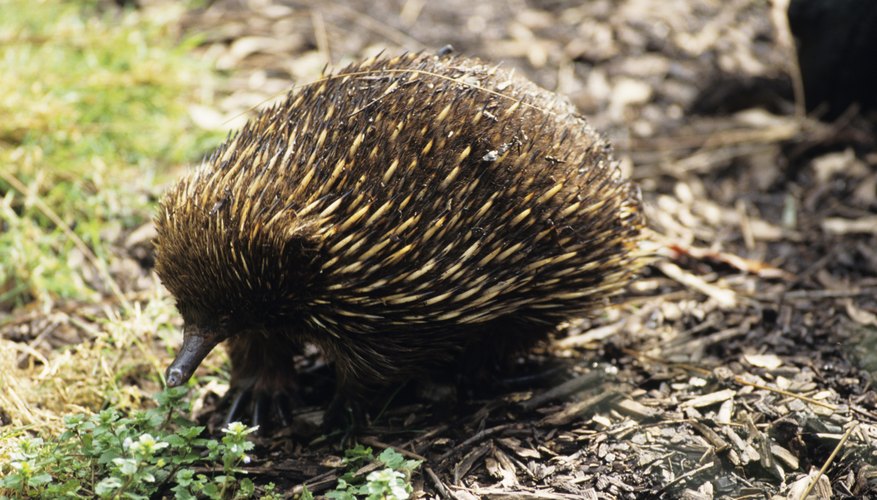The vast majority of mammals give birth to live young. The only mammals that lay eggs are known as monotremes. There are only five surviving monotreme species and all can be found in either Australia or New Guinea. These are the platypus and four species of echidna or spiny anteater. Although they lay eggs they have hair, are warm-blooded and produce milk to suckle their young in common with other mammals.
Platypus
The first scientists to examine the remains of a platypus believed they were the victims of a hoax, according to National Geographic. They are certainly unusual creatures, having a tail like a beaver, webbed feet and a bill similar to that of a duck. Male platypuses also have venomous spurs on their hind legs. They spend most of their time in the water, where they sift the mud with their bills for insects, shellfish and worms. Platypuses are indigenous to Australia and Tasmania.
- The first scientists to examine the remains of a platypus believed they were the victims of a hoax, according to National Geographic.
- They spend most of their time in the water, where they sift the mud with their bills for insects, shellfish and worms.
Eastern long-beaked echidna
The eastern long-beaked echidna is only found in New Guinea. It has hedgehog-like spines and will curl up into a ball if threatened. Its name is derived from a long, curving snout that is approximately 20cm long on an adult. Inside is a long tongue with backward pointing barbs that is used for capturing prey. The eastern long-beaked echidna is a long-lived species, with one captive specimen having lived for 30 years, according to Arkive.
- The eastern long-beaked echidna is only found in New Guinea.
- Inside is a long tongue with backward pointing barbs that is used for capturing prey.
Western long-beaked ecihdna
The western long-beaked echidna is very similar to the eastern long-beaked echidna and they were originally thought to be the same . The main difference is that the eastern long-beaked echidna has five claws on each forefoot while the western long-beaked echidna has three or occasionally four. Both species are found on the island of New Guinea.
Sir David's long-beaked echidna
The Sir David's long-beaked echidna is the smallest of the long-beaked echidna species, being closer in size to the short-beaked echidna. Like all echidna it is a strong digger and feeds mainly on earthworms. It is named after famed British naturalist and broadcaster Sir David Attenborough and is only known to live in the Cyclops Mountains of Papua.
Short-beaked echidna
The short-beaked echidna is the smallest species of echidna. Like other species it is very proficient at digging. If threatened it will curl into a ball or, if there is time, it will dig a shallow hole and leave only its spines sticking out. They are found in a variety of habitats throughout mainland Australia, Tasmania and New Guinea.
- The short-beaked echidna is the smallest species of echidna.
